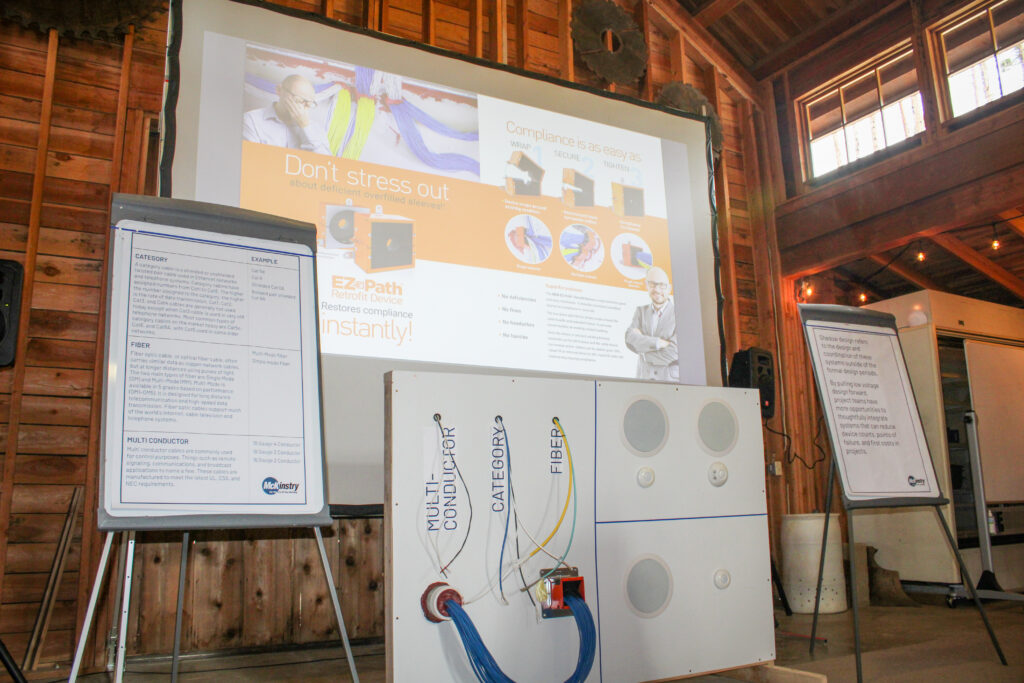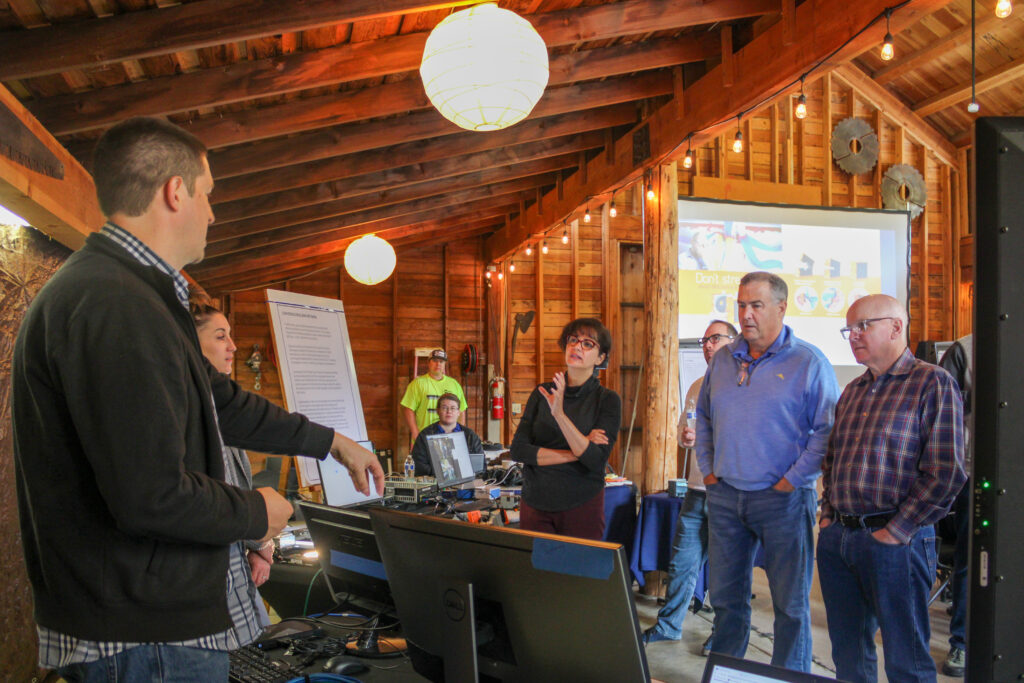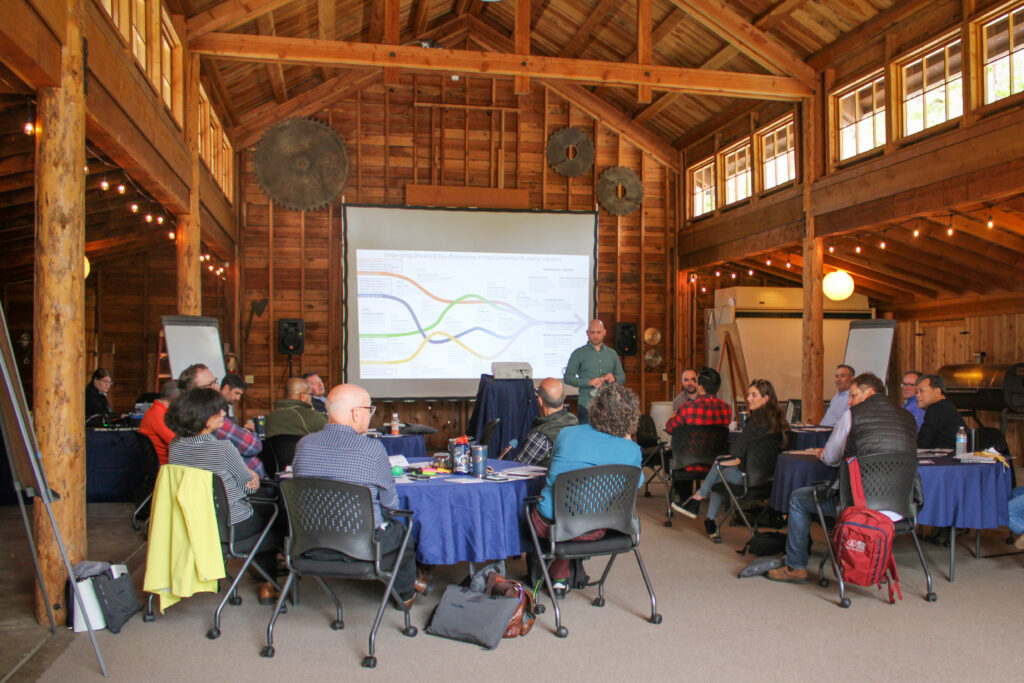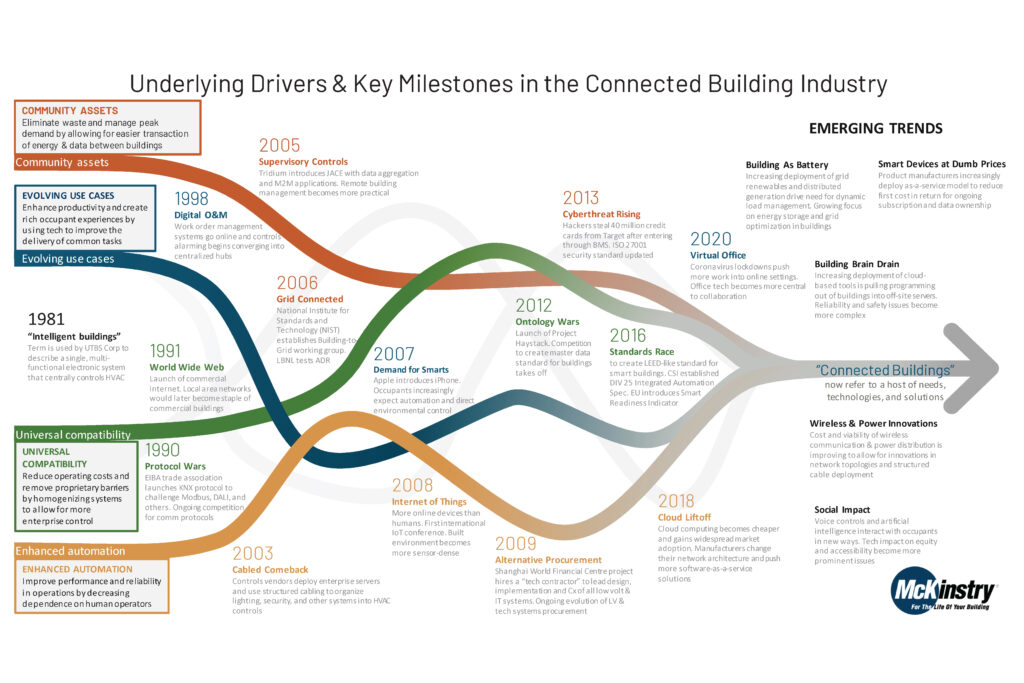- All Posts
- Smart Building Expert Darlene Pope Kicks Off McKinstry Building Technology Retreat
Smart Building Expert Darlene Pope Kicks Off McKinstry Building Technology Retreat
The work environment is changing, and McKinstry is organizing thought leadership to continue to move the commercial real estate industry forward. We recognize the need for intelligent, responsive, adaptable, and more autonomous buildings that reduce waste and drive valuable outcomes for building owners and occupants. As an active and committed leader in this movement, McKinstry is bringing together industry leaders to develop solutions for our clients and communities.
Recently, we hosted smart building and digital workplace expert Darlene Pope at our Seattle headquarters to kick off a multi-day building technology retreat. Pope, who now serves as President of North America for Planon, graciously shared her thoughts on the evolution of smart and connected buildings in an engaging question-and-answer session with the audience:

Q: Why do we need smarter buildings?
A: The difference between what we are used to in technology in our daily lives and what we have in the workplace is mind-blowing. We need to figure out a way to bring the same technology people use in their homes and in their personal lives into our workplaces. Smart buildings need to use real-time data to respond to the immediate need of the occupants and be able to run the building based on current conditions and occupancy. More importantly, the building needs to be able to predict the needs of the occupants based on past needs, trends, and analytics.
Q: Are smart buildings more expensive?
A: More expensive than what? Dumb buildings? You have to recognize that there’s a huge difference between cost and value. If the value is greater than the cost, you win. So, the first thing you need to do is determine your business objectives and then evaluate the value that comes from investing in the technology that can help meet those objectives. In my experience, the primary business driver for investing in technology in buildings is the people. The whole reason a building exists in the first place is to provide a healthy, safe, and productive environment for people to do their work… whatever that work may be. So, the added cost of having a smart building in terms of creating a better place to work and having a happier workforce is worth the investment. How much to invest in building technology comes down to determining your business drivers, measuring your metrics, and making the technology work for building occupants. Productivity, happiness, health and wellness, and indoor air quality all create a workplace that positively contributes back to the people. The real question is… what’s the cost of NOT having a smart building?
Q: How has COVID changed the way we look at the workplace?
A: COVID became the catalyst for building owners to realize all the information and functionality that they should have had in the first place. Real-time occupancy, utilization patterns, how space is being used – these are all metrics that anyone owning and operating real estate should have already had before COVID. Now, this data is needed to determine how to run the buildings, how many people are coming back to work, and how much space businesses actually need. In addition, COVID put a much higher emphasis on indoor air quality… which again, should have been a priority for owners in the first place.
Q: How do we drive higher adoption rates for smart buildings?
A: The number one answer is… you have to put it in front of your clients. You’re the experts. You know the options. You know the value. Thousands of companies are ready for smart buildings, but they don’t know where to start. They are relying on architects, engineers, and consultants to lead the way. We need to start thinking about what building occupants want in their office space and design it that way from the start. They want comfort and convenience. They want to be able to do everything from the palm of their hand with a mobile app. They want instant information that helps inform a decision about the value of coming into the office that day. They want to know that the office is safe and healthy. It is up to us to show them what is possible and design solutions that meet their needs.
Q: Why is real-time occupancy so important?
A: When you look at end-to-end technology solutions and the whole digital workplace conversation, I firmly believe the number one data set we need to solve for in these buildings is occupancy. Real-time occupancy. Not just for utilization statistics, but location-based services. Where are my people – right now? In the event of a fire or other emergency, you need to know where your people are. Also, if you look at the operational curve of a building vs. an occupancy curve, there is a huge opportunity in the delta between the two. Operating a building based on real-time occupancy instead of a time clock allows for significant savings in energy costs and reducing your carbon footprint.
Q: Where do you see the gaps between the technology that is available vs. the technology we are using in buildings?
A: Oh… how much time do we have for this one? Look… we need to understand that the world works on real-time, location-based data. Instant information in the palm of our hands. Everything is driven by our smart phones and our apps. We use GPS, maps, access all our financial information, pay bills, trade stock, check weather, order an Uber, find a restaurant near me now, book hotels and flights, check in – all on our smart phone apps using location based services. And then we walk into the office and “poof”… all that goes away. Why? Because people don’t want to be tracked. Can you imagine using a GPS or ordering an Uber without the app knowing where you are??? We are all walking around with an occupancy sensor in the palm of our hand that we use daily, but it’s not used in the office. That’s just not smart.
Q: What inspires you about the future of smart buildings?
A: I hate talking about the future of smart buildings, because that gives people a reason to procrastinate! The future of smart buildings is now. We have the technology now. It’s just a matter of getting all the stakeholders – from the architects to the engineers to the owners and the occupants to understand what their options are and to demand the best. When you look at the direction that consumer technology is going, we need to build buildings to respond the same way and to keep up with consumer trends. If you want to know the future of smart buildings, look at the way our children live. Look at what the next generation will demand. My children don’t use a light switch. My grandchildren won’t know what a light switch is. We have a tremendous opportunity to design and build buildings that are smart, efficient, intuitive, and valuable to helping our clients achieve their top business drivers.
40 years after the emergence of smart buildings, Seattle is poised to break through as a leader in this space for a few reasons:
- Engineering prowess – The Pacific Northwest has a tremendous amount of knowledge capital in manufacturing, civil, and software engineering.
- Proven success leading major transformations – Seattle played a major role in introducing personal laptops, cloud computing, and aircraft manufacturing.
- Diverse building stock – This region is a “top 10” life science hub with a high density of tech offices and forward-thinking public institutions.
- Relevant, engaged construction culture– Seattle was an early leader in design-build and thrives on the kind of flat, dynamic construction culture needed to adopt change.
At McKinstry, we believe that smart and connected buildings are a critical element in driving out waste and climate harm from the built environment. Our teams deliver intelligent solutions that provide the comfort and convenience occupants want without compromising on energy savings or efficiency. We are a leader in smart buildings and are championing an effort to bring together experts from across the industry focused on the best outcomes for our clients. We look forward to bringing an all-new Innovation Technology Lab to McKinstry’s Seattle Campus later this year. The lab’s thoughtful design will bring industry, academia, and owners together to test, learn, and deploy emerging building technology. We invite you to learn more about our integrated approach to building technology system design, procurement, and delivery here.





Optimizing ESG From the Field to the Boardroom
Building a thriving planet touches every aspect of our business By Joseph Hagar | President, Chief Financial…

McKinstry’s Kate Pearson on Implementing Building Efficiency
“When both the development team and the client achieve the same goals by saving money, saving energy and making build…

McKinstry’s David Ramsey on Renewable Energy Innovation
“One of my favorite parts of my job is presenting a solution to a client — that moment when they understand the oppor…